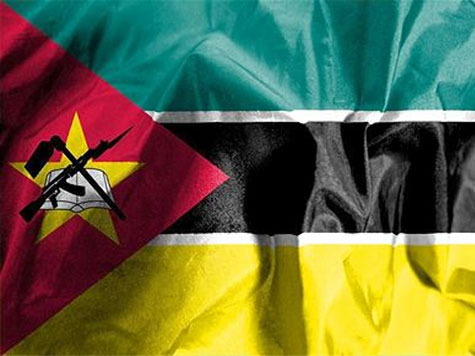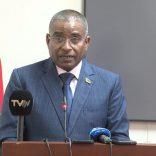Mozambique: Physical cash in circulation increases by 6.5% in last 12 months
Mozambique’s Growth Rate For 2016 Revised Downwards

In file Club of Mozambique
The growth of the Mozambican economy slowed down in 2015, forcing the government to alter its projections for 2016, Prime Minister Carlos Agostinho do Rosário told the country’s parliament, the Assembly of the Republic, on Wednesday.
Introducing the government’s Economic and Social Plan for 2016, Rosario said that the growth rate for the first six months of 2015 was 6.3 per cent, making it most unlikely that the target for the entire year of a 7.5 per cent growth in GDP could be achieved.
That target has now been revised down to seven percent, and while the initial version of the 2016 plan predicted a 7.8 per cent growth rate, that too has been brought down to seven per cent.
Declining world prices for many of Mozambique’s exports has forced a revision of how much the county can expect to earn from its exports next year from an original target of 4.6 billion US dollars to 3.6 billion.
If achieved, this will be an increase of 7.4 per cent. Rosário forecast an increase of 14 per cent in the increase of Mozambique’s “traditional exports” (such as prawns, tobacco, cashew nuts and sugar) but a decline of 5.4 per cent in exports from the foreign investment mega-projects.
The balance of trade is expected to deteriorate, since imports are projected to rise by 10.9 per cent. Much of this is for the imports required to build the liquefied natural gas factory in the northern province of Cabo Delgado, which will process the vast gas resources discovered offshore, in the Rovuma Basin.
The inflation target remains unchanged. The government hopes to keep the average 12 monthly inflation rate in 2016 at no more than 5.6 per cent.
Agriculture is targeted to grow by 6.6 per cent in 2016. The main effort announced by Rosário will be in grain. The target is to reach 2.85 million tonnes of grain, an increase of 13.3 per cent on the 2015 harvest.
Maize production should rise by 11.9 per cent to 2.1 million tonnes, while the government hopes that rice production will leap by 25.9 per cent to 450,000 tonnes.
In cash crops, the government plans for a continual recovery in cashew production, from 81,240 tonnes this year to 100,000 tonnes in 2016 (a 23.1 per cent increase). Other significant increases planned are for soya, up from 33,450 to 50,000 tonnes (a rise of 49.1 per cent), and for sesame (an 11.1 per cent increase, taking total production to 60,000 tonnes).
As for livestock, the plan calls for a 10 per cent increase in beef production, a 27 per cent increase in pork, 19 per cent for chicken, 37 per cent for eggs and six per cent for milk.
Manufacturing industry is to increase production by 5.1 per cent. Among the significant components of this rise will be a new factory producing aluminium rods, and two new cement factories.
Mining production is forecast to rise by 10.4 per cent. Much of this rise will be due to the extraction of titanium minerals from the heavy sands deposits, notably from the dredge mine worked by the Irish company Kenmare Resources in Nampula province. Production of ilmenite is to rise by 42.5 per cent and of zircon by 53.5 per cent.
In the social area, the government plans to recruit 8,500 new teachers. This is not enough to improve the pupil/teacher ratio in primary education, which is set to rise from 61 this year to 62 next year.
367 new primary schools and 27 secondary schools will be opened, Rosário announced. 14 million text books will be distributed free of charge, and 70,000 school desks will be installed in classrooms. The school building and furniture programmes are designed to reduce the number of children who are obliged to attend classes in the open air and to sit on the floor.
As for the health service, the government hopes that 73 per cent of all births will take place in health units, and that the number of children under the age of 12 months vaccinated against all the main childhood diseases will rise from this year’s figure of 87.5 per cent to 88 per cent.
The government will recruit 3,000 new health workers, including 280 doctors.
In water supply, the plan envisages bringing safe drinking water to an additional 270,000 consumers in urban areas and 261,000 people in the countryside. This will involve the rehabilitation or expansion of 28 water supply systems in cities and towns, 45,000 new domestic water connections, and the construction of 1,723 new, safe water sources (wells and boreholes) in rural areas.












Leave a Reply
Be the First to Comment!
You must be logged in to post a comment.
You must be logged in to post a comment.